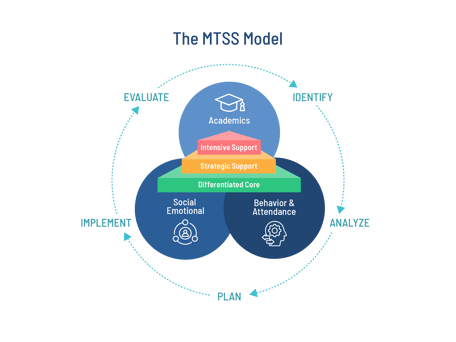Meeting (meet·ing | \ ˈmē-tiŋ): An act or process of coming together, first used in the 14th century. (Merriam-Webster,n.d.)

While your meetings may not look like the medieval one above, at times, it can seem that school leaders, teachers, and staff participate in a never-ending cycle of meetings. Some meetings, such as the beginning-of-year and end-of-year professional development, are planned months in advance. Grade-level meetings are scheduled regularly, and other meetings are ad hoc and dedicate time to addressing shifting school and student needs.
And, of course, urgent last-minute meetings emerge because of an immediate need or action required. All these meetings can leave staff feeling a bit dizzy and questioning, “What is the point of this meeting?”, “What is my role in this meeting?” and even “At what point do we discuss if we even needed this meeting?”.
Given these questions, it is vital to consider the risk of creating a culture of “meeting overload” or, in other words, holding too many meetings without clearly defined purposes, ultimately leading to “meeting fatigue.” It is especially pertinent to consider how to avoid this overload when implementing a Multi-Tiered System of Supports (MTSS) process.
MTSS is a collaborative system of supports that wraps around an entire school. As a system-level structure, it provides academic, behavioral, social-emotional, and attendance support for all students. Data is gathered and utilized to address academic and non-academic needs, such as attendance and social-emotional concerns, ensuring a holistic approach to support.
 Collaborative meetings are essential to successfully implementing MTSS within a school. A crucial part of this collaboration is ensuring your MTSS team works efficiently and avoids the feeling of “meeting inflation” throughout the year. The top questions below should be asked to develop the school’s efficiencies, whether engaging in the ongoing building of MTSS teams and conducting MTSS meetings or just beginning the process.
Collaborative meetings are essential to successfully implementing MTSS within a school. A crucial part of this collaboration is ensuring your MTSS team works efficiently and avoids the feeling of “meeting inflation” throughout the year. The top questions below should be asked to develop the school’s efficiencies, whether engaging in the ongoing building of MTSS teams and conducting MTSS meetings or just beginning the process.
Question 1: What Is the Overall Mission of the MTSS Team?
The first step in building an MTSS team is understanding why an MTSS team is necessary. If the team does not have a clearly defined purpose in the school, it will flounder in gaining traction among the team members and other school staff who might benefit from the work of the MTSS team.
The MTSS team is a school-based problem-solving team, the engine that drives the MTSS system. The MTSS team proactively addresses system needs by reviewing school-wide data (within grade levels and classrooms) and supports individual student growth by helping to monitor progress and make decisions regarding support.
This means that the MTSS team works at both a macro- and micro-level in a school building. At the macro-scale, the MTSS team helps to identify school-wide data trends that can diagnose the health and effectiveness of a school’s core curriculum instruction which impacts all students. On the micro-scale, this team supports grade levels and teachers in creating and carrying out targeted intervention plans for small groups of students and individual students who might need intensive support beyond the differentiated instruction they receive in the classroom.
Question 2: What Are the Distinct Roles for Each Person on the MTSS Team?
Collaboration is vital to the MTSS team as they will need to solve problems and support various stakeholders within the school community. MTSS team membership is determined by standing members who contribute expertise from their respective disciplines and those who may be invited to address a specific concern.
Research about building effective teams discussed in the Harvard Business Review found that “collaboration improves when the role of individual team members are clearly defined and well understood…without such clarity, team members are likely to waste too much energy negotiating roles…rather than focus on the task” (Gratton & Erickson, 2007). With this understanding, several individuals within a school have essential roles on the MTSS team.
Below is a list of each of the MTSS team members and their roles and responsibilities:
|
Role |
Responsibility |
|
Administrative Representative |
|
|
MTSS Team Coordinator/Facilitator |
|
|
Grade-level/Content Area Representative |
|
|
Specialists (rotating members including, ELL teacher, speech/language pathologist, intervention teacher, behavior specialist based on the student being discussed) |
|
|
Classroom teacher (rotating member of team representing specific students) |
|
Question 3: When Will the MTSS Team Meet, and What Is the Purpose of Each Meeting?
As all educators know, the school year quickly fills up with obligations. As a result, prioritizing the cadence of MTSS meetings will help this team to be proactive and efficient.
The School Leadership Meeting
This meeting is conducted three times a year by school leadership, aligned with the universal screening schedule. These meetings aim to understand the school-wide health and wellness around MTSS. In addition, the School Leadership team reviews school-level data (assessment scores, tier demographic distributions, tier movement and referral rates, etc.) to answer the question, "Is this a healthy school?"
The Grade/Content Team Community Meeting
This meeting happens monthly during a dedicated grade team meeting time. This meeting aims to discuss and problem-solve for students the teachers are concerned about because they aren't making sufficient progress, typically students receiving Tier 2 support, and to check in on students receiving Tier 3 support. In addition, grade/Content teams create/review ongoing intervention plans and refer students for a Student Check-in Meeting if needed.
The Individual Student Support Meeting
This meeting provides the time and space for individualized deep dive problem-solving for students not making sufficient progress when supported by the Grade/Content Team Community Meeting.
|
Don't miss out on this on-demand webinar
|
Question 4: What Efficiencies Will Be Taken During MTSS Team Meetings? (So they don’t go on and on and on…you get the point)
Per the meeting cadence suggested above, MTSS meetings will be happening at the school-wide, grade level, and for individual students. To preserve efficiencies and make the most of the valuable time all attendees spend together, the well-known mantra “no agenda, no attenda” must be followed. Providing agendas ensures all team members understand the goal of the meeting, why it is essential, discussion points, and their role/responsibilities. As a result, consider the following responsibilities below for MTSS meetings:
MTSS team members and meeting attendees are responsible for:
- Reading the agenda before each meeting and meeting notes after each meeting;
- Complete any pre-work needed before each meeting (i.e., review student universal screening data, progress monitoring data, attendance data, etc.); and
- Actively participate in each meeting.
MTSS Team Leaders are responsible for:
- Keeping agendas concise, avoid any access verbiage;
- Including the time, date, the purpose of the meeting, and attendees;
- Providing a list of topics to be discussed, in the sequential order to be covered;
- Using a consistent format for each agenda throughout the school year;
- Assigning roles to participants as needed;
- Ensuring technology is not a barrier to accessing the agenda (provide a user-friendly format adopted by the campus: PDF, Google Doc, Paper, etc.);
- Disseminating MTSS meeting notes aligned to the agenda, so all attendees have a way to understand what was discussed.
➡️ Related Resource: Communication Planning for MTSS
Question 5: What Are the Norms Expected at Each MTSS Meeting?
The practice of developing and providing norms before meetings can be beneficial. Norms help ensure all attendees understand what is expected before they even walk in the door (or log on), and they are not left wondering how or when to participate or give feedback. At Branching Minds, norms have been created for our meetings, which can be used as a foundation for MTSS meeting norms.
Please note that different types of meetings may need different norms, and the list below was created by soliciting feedback from our team when working to make meetings more efficient:
- Meetings are Inclusive - every attendee has a voice;
- Meetings are a Shared Experience - everyone has an active role and is contributing;
- Meetings are Productive - we get in with a purpose, we get out with action steps toward that purpose; and
- Meetings are Responsive - the meeting structure evolves based on the needs of the team.
For more information about applying best practices to MTSS meetings, check out this resource!
|
MAIN TAKEAWAYS FROM THIS ARTICLE: The following tenants support efficient and effective MTSS teams and MTSS meetings:
|
Citations
Gratton, L., & Erickson, T. J. (2007, November). Eight Ways to Build Collaborative Teams. Harvard Business Review. Retrieved May 23, 2022, from https://hbr.org/2007/11/eight-ways-to-build-collaborative-teams.
Merriam-Webster. (n.d.). Meeting definition & meaning. Merriam-Webster. Retrieved July 14, 2022, from https://www.merriam-webster.com/dictionary/meeting#h1
Najjar, Y. (n.d.). Best practices for meetings and how to apply them to MTSS. Branching Minds, Inc. Retrieved July 14, 2022, from https://www.branchingminds.com/blog/best-practices-for-meetings-and-how-to-apply-them-to-mtss
![[Guest Author] Kismet Lantos-Swett-avatar](https://www.branchingminds.com/hs-fs/hubfs/Team/Round%20cropped%20headshots/Screen%20Shot%202022-05-23%20at%206.32.48%20PM.png?width=82&height=82&name=Screen%20Shot%202022-05-23%20at%206.32.48%20PM.png)
About the author
[Guest Author] Kismet Lantos-Swett
Kismet Lantos-Swett is a Branching Minds Educational Consultant based in Chicago, IL. Kismet has served students, educators, and leaders through various roles throughout her career including as a classroom teacher, learning specialist, literacy interventionist, and as a Leadership for Educational Equity Fellow in the Rhode Island Department of Education. She is passionate about helping teachers feel empowered to have a strengths-based mindset in supporting their students so that students can grow and find success in a safe, curious, and compassionate environment. Kismet has both a Masters of Education in education, policy and management from the Harvard Graduate School of Education and a Masters of Teaching in Elementary Education from Marian University.

Your MTSS Transformation Starts Here
Enhance your MTSS process. Book a Branching Minds demo today.

















.png?width=716&height=522&name=MTSS-interventions-secondary-school(preview).png)

